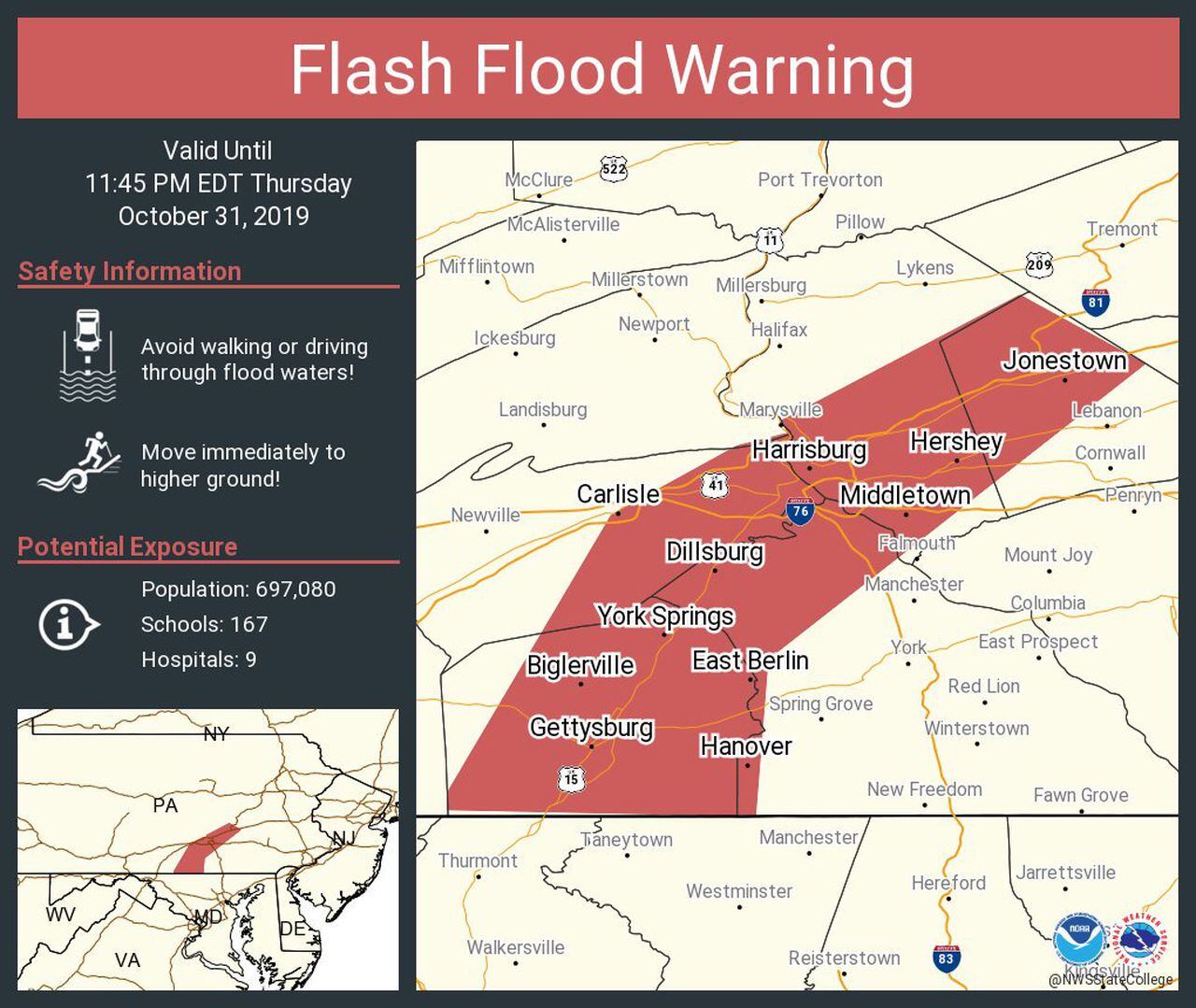Understanding The Dangers Of Flash Flood Emergencies

Table of Contents
The Speed and Force of Flash Floods
The sheer speed and force of a flash flood are what make them so dangerous. Unlike slow-rising river floods, flash floods develop rapidly, often within six hours or less, and sometimes even in a matter of minutes. This rapid onset leaves little time for evacuation and response. The rushing water carries immense power, capable of sweeping away vehicles, uprooting trees, and destroying buildings in its path.
- High velocity water: Flash floodwaters move with incredible speed, easily carrying away cars, houses, and even large debris. The force of this water can be overwhelming, making escape extremely difficult.
- Debris: The water carries a significant amount of debris—trees, rocks, parts of buildings, and other objects—creating a deadly projectile effect that inflicts further damage and injury.
- Sudden water level rise: The dramatic and unexpected rise in water levels is a hallmark of flash floods, leaving individuals and communities with little time to react or evacuate safely.
- Infrastructure damage: Roads, bridges, and utility lines are often severely damaged or destroyed by the sheer force of flash floodwaters, hindering rescue efforts and further isolating affected areas.
Identifying Flash Flood Risk Areas
Understanding where flash floods are most likely to occur is vital for preparedness. Several geographical and meteorological factors contribute to high-risk areas.
- Steep slopes and minimal vegetation: Areas with steep slopes and limited vegetation are particularly vulnerable because rainfall runoff flows rapidly downhill, concentrating water in low-lying areas.
- Intense rainfall: Regions experiencing intense rainfall in a short period—typically more than 2 inches in an hour—are at significant risk of flash floods.
- Proximity to rivers and streams: Areas near rivers and streams are highly susceptible, as rapid increases in water levels can quickly lead to overflowing and widespread flooding.
- Low-lying areas and floodplains: These areas are naturally prone to flooding, as water naturally collects in low-lying areas.
- Utilizing resources: The National Weather Service provides valuable resources and forecasts to identify areas at high risk of flash floods. Regularly checking these resources is crucial for staying informed.
Recognizing Flash Flood Warning Signs
Recognizing the signs of an impending flash flood is crucial for immediate action. Stay vigilant and pay close attention to the following indicators:
- Rapidly rising water levels: A sudden and significant increase in the water level of rivers, streams, or normally dry creek beds is a major warning sign.
- Heavy rainfall: Sustained heavy rainfall, especially exceeding 2 inches in a short period, significantly increases the risk of flash flooding.
- Mudflows or debris flows: The appearance of mudflows or debris flows indicates that significant water runoff is occurring and flash flooding is highly likely.
- Official warnings: Heed all flash flood warnings and watches issued by the National Weather Service or your local emergency management agency. These alerts are critical.
- Changes in river/stream sounds: A noticeable increase in the volume or intensity of a nearby river or stream's sound can suggest a rapid rise in water levels.
Safety Measures During a Flash Flood Emergency
If you encounter a flash flood, immediate action is paramount. Remember: your safety is the top priority.
- Move to higher ground immediately: This is the most crucial step. Get to the highest point possible, away from the floodwaters.
- Do not attempt to drive or walk through floodwaters: Floodwaters are deceptively powerful and can sweep you away even in seemingly shallow water. “Turn around, don’t drown” is a life-saving mantra.
- Avoid downed power lines: Downed power lines pose an extreme electrical hazard; stay far away from them.
- Stay informed: Keep your radio tuned to local news and weather broadcasts for critical updates.
- Follow emergency service instructions: Obey instructions from emergency responders.
Post-Flash Flood Recovery and Safety
Once the immediate danger has passed, there are still significant safety concerns.
- Inspect your home for damage: Check for structural damage and report any significant issues to the authorities.
- Report damage: Contact your local authorities to report damage to your property and infrastructure.
- Beware of contaminated water: Floodwater is often contaminated with sewage and hazardous materials. Avoid contact whenever possible.
- Avoid flood-damaged areas: Unless it's absolutely necessary and safe to do so, avoid flood-damaged areas until officials deem them safe.
- Contact your insurance provider: If your property has suffered damage, contact your insurance provider as soon as it’s safe to do so to begin the claims process.
Conclusion
Flash flood emergencies are extremely dangerous events characterized by their rapid onset, destructive power, and potential for significant loss of life and property. Understanding the risks, identifying high-risk areas, recognizing warning signs, and taking prompt action are critical for survival. Preparation is your best defense against the devastating impact of flash floods. Learn more about flash flood safety in your area by consulting resources like the National Weather Service ([link to NWS website]) and your local emergency management agency. By staying informed and prepared, you can significantly reduce your risk and protect yourself and your loved ones during a flash flood emergency. Remember, understanding and heeding warnings concerning flash flood emergencies is crucial for your safety.

Featured Posts
-
 Urgent Flash Flood Warning Issued For Pennsylvania Take Action Now
May 26, 2025
Urgent Flash Flood Warning Issued For Pennsylvania Take Action Now
May 26, 2025 -
 Israeli Premier League Maccabi Tel Avivs Winning Streak Continues
May 26, 2025
Israeli Premier League Maccabi Tel Avivs Winning Streak Continues
May 26, 2025 -
 300 Fine For Spectator Who Spat At Mathieu Van Der Poel
May 26, 2025
300 Fine For Spectator Who Spat At Mathieu Van Der Poel
May 26, 2025 -
 Analyse Des Pannes Techniques Rtbf Vers Une Meilleure Performance
May 26, 2025
Analyse Des Pannes Techniques Rtbf Vers Une Meilleure Performance
May 26, 2025 -
 Doert Oyuncunun Sorusturmasi Kuluebuen Gelecegi Tehlikede Mi
May 26, 2025
Doert Oyuncunun Sorusturmasi Kuluebuen Gelecegi Tehlikede Mi
May 26, 2025
